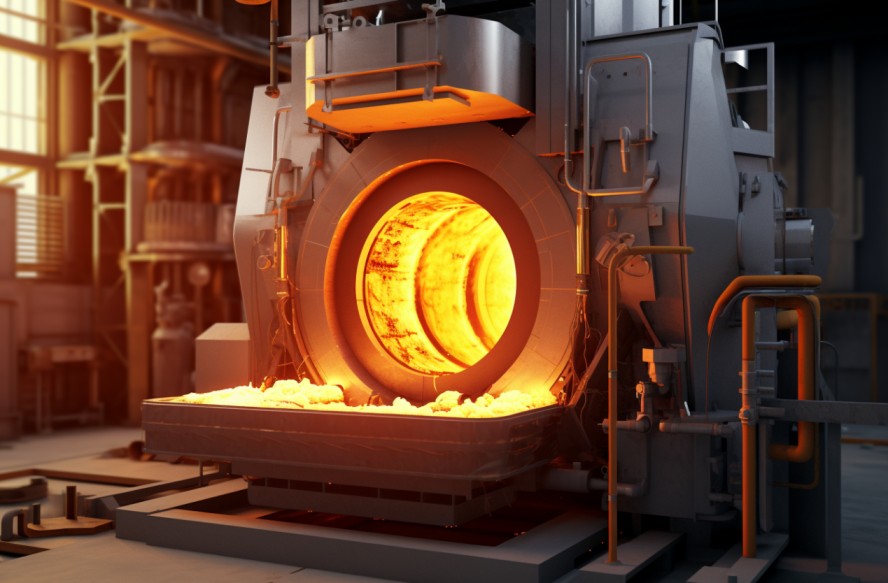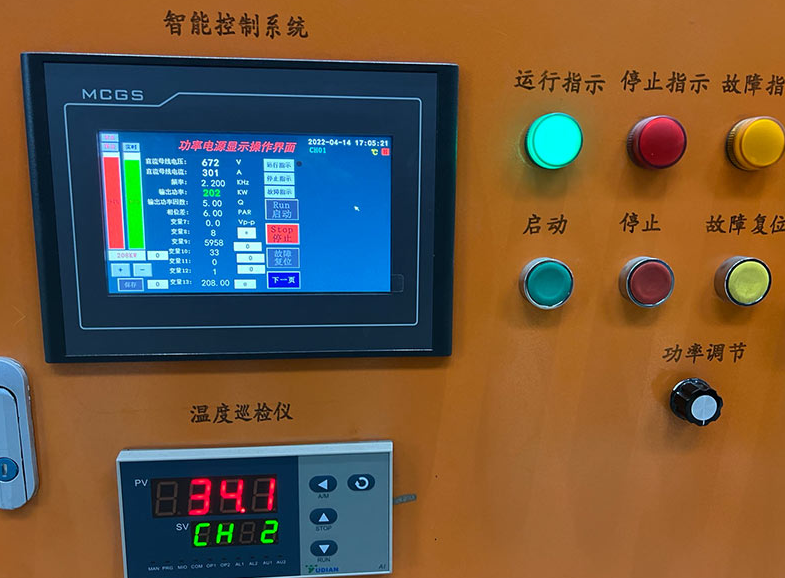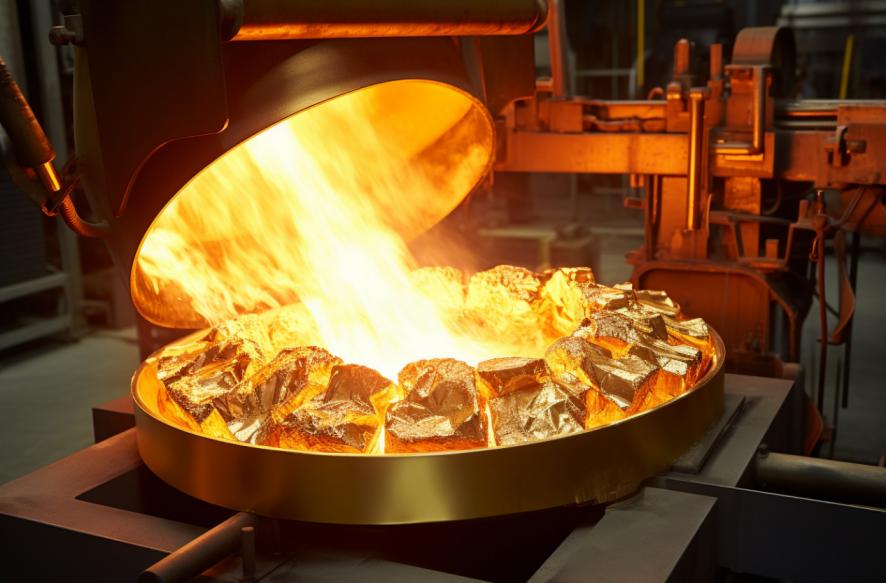Breaking Down Costs: Is Investing in a Brass Induction Melting Furnace Worth It?
In the dynamic world of metalworking and foundry industries, the relentless drive for efficiency, accuracy, and eco-friendliness is unending. In this ongoing quest, the introduction of brass induction melting furnaces stands out as a game-changing innovation. This piece explores the industry’s terrain, the urgent requirements fueling the adoption of these furnaces, and their adeptness in tackling these issues, featuring a prominent manufacturer, Taizhou Hongkang Electric Co., Ltd.
Industry Status: Embracing Technological Advancements
1. Embracing Innovation
The foundry industry has historically been characterized by its traditional methods of metal melting, often involving substantial energy consumption and environmental impact. However, in recent years, there has been a notable shift towards embracing technological advancements to enhance efficiency and sustainability.
2. Rise of Induction Melting
Among these advancements, induction melting technology has garnered significant attention for its ability to offer precise control over the melting process, higher energy efficiency, and reduced emissions. While induction melting was initially adopted in industries like steel and aluminum, its application in brass melting has been gaining traction steadily.
3. Challenges in Conventional Methods
Traditional melting techniques, such as cupola furnaces and crucible furnaces, pose several challenges to the industry. These include inconsistent heating, longer melting times, higher energy consumption, and limited control over the melting process. Moreover, environmental regulations are becoming increasingly stringent, necessitating cleaner and more sustainable practices.
The Industry Needs: Efficiency, Precision, and Sustainability
1. Efficiency in Melting Processes
One of the primary requirements of the foundry industry is the optimization of melting processes to improve overall efficiency. Traditional furnaces often suffer from inefficiencies due to heat loss and uneven heating, leading to longer cycle times and higher energy consumption. Addressing these inefficiencies is crucial for enhancing productivity and reducing operational costs.
2. Precision and Quality Control
In addition to efficiency, foundries place a high premium on precision and quality control throughout the melting process. Variations in temperature and composition can significantly impact the quality of the final product, leading to defects and rework. Therefore, there is a pressing need for technologies that offer precise control over melting parameters to ensure consistency and quality in the output.
3. Sustainability and Environmental Compliance
With growing environmental concerns and regulatory pressures, foundries are increasingly seeking sustainable solutions that minimize energy consumption and emissions. Conventional melting methods often rely on fossil fuels and emit pollutants such as CO2, NOx, and particulate matter. Transitioning to cleaner and more energy-efficient technologies is imperative for the long-term viability of the industry.
How Brass Induction Melting Furnace Addresses These Challenges
1. Precise Temperature Control
The brass induction melting furnace offers precise temperature control throughout the melting process, ensuring uniform heating and consistent quality in the final product. By utilizing electromagnetic induction to generate heat directly within the metal charge, these furnaces eliminate the inefficiencies associated with traditional heating methods.
2. Shorter Melting Times
Compared to conventional furnaces, induction melting technology significantly reduces melting times, leading to higher productivity and throughput. The ability to achieve melting temperatures rapidly allows foundries to optimize their production schedules and respond more swiftly to changing market demands.
3. Energy Efficiency
One of the hallmark features of brass induction melting furnaces is their exceptional energy efficiency. By minimizing heat loss and maximizing heating efficiency, these furnaces consume less energy compared to their counterparts. This not only reduces operational costs for foundries but also aligns with their sustainability objectives by lowering overall energy consumption and carbon footprint.
4. Cleaner Operations
Unlike traditional melting methods that rely on fossil fuels, induction melting furnaces operate using electricity, which can be sourced from renewable or cleaner energy sources. This results in reduced emissions of greenhouse gases and pollutants, contributing to a cleaner and greener manufacturing process. Additionally, the absence of combustion processes minimizes the generation of airborne pollutants, promoting a healthier work environment for foundry personnel.
Key Features to Consider
Choosing the right Brass Induction Melting Furnace necessitates a comprehensive understanding of its key features and capabilities. Here are some essential factors to consider:
1. Power Supply Technology:
The intermediate frequency power supply serves as the heartbeat of the induction melting furnace. Opting for a static power supply composed of high-power semiconductors or IGBT modules ensures superior technical and economic performance.
The benefits of such advanced power supply technology include enhanced efficiency, precise control over heating processes, and increased reliability, setting the stage for optimal performance in smelting, diathermy, and other industrial applications.
2. Manufacturer Expertise:
The credibility and expertise of the manufacturer play a pivotal role in determining the quality and performance of the furnace. Entrusting your requirements to a seasoned industry player with a proven track record can mitigate risks and ensure long-term satisfaction.
Taizhou Hongkang Electric Co., Ltd., boasting 18 years of experience in medium frequency induction heating, stands as a beacon of excellence in the realm of electromagnetic induction technology. Specializing in a spectrum of heating processes, including melting, insulation, and quenching, the company epitomizes innovation and reliability.
3. Technical Specifications:
Delving into the technical specifications of the furnace is imperative to align its capabilities with your specific operational needs. Parameters such as power output, furnace capacity, and heating efficiency dictate the furnace’s suitability for different applications.
Taizhou Hongkang Electric Co., Ltd. offers a diverse range of furnaces, spanning power outputs from 50KW to 30000KW and furnace capacities from 20Kg to 90000Kg. This versatility ensures that customers can find an optimal solution tailored to their requirements.
Innovative Solutions from Taizhou Hongkang Electric Co., Ltd.
As a trailblazer in the realm of electromagnetic induction heating, Taizhou Hongkang Electric Co., Ltd. exemplifies innovation, reliability, and customer-centricity. Let’s explore some of the groundbreaking solutions offered by this esteemed manufacturer:
1. Energy-Saving Medium Frequency Heating Furnaces:
In an era marked by growing environmental consciousness and the imperative for sustainable practices, energy-saving solutions garner significant attention. Taizhou Hongkang Electric Co., Ltd. addresses this need with its line of energy-saving medium frequency heating furnaces, delivering superior performance while minimizing energy consumption.
2. Intelligent Medium Frequency Induction Furnaces:
Leveraging cutting-edge technology, the company’s intelligent medium frequency induction furnaces represent the pinnacle of efficiency and precision. These furnaces boast superior performance metrics, surpassing national standards in parameters such as power factor, harmonic voltage and current, and melting rate.
3. Global Reach and Accreditation:
With a commitment to excellence and innovation, Taizhou Hongkang Electric Co., Ltd. has garnered recognition on both national and international fronts. The company’s products, acclaimed for their quality and reliability, have made inroads into global markets, catering to diverse industrial needs.
Accreditation from prestigious bodies such as the ISO9001 quality certification system, EU CE certificate, and SGS on-site certification further attest to the company’s commitment to upholding the highest standards of quality and compliance.
Conclusion: Transforming the Future of Metal Melting
The brass induction melting furnace represents a paradigm shift in the foundry industry, offering a compelling solution to the challenges of efficiency, precision, and sustainability. With its ability to deliver precise control, shorter melting times, and cleaner operations, this technology is poised to revolutionize metal melting processes globally. As manufacturers like Taizhou Hongkang Electric Co., Ltd. continue to innovate and refine their offerings, the future of metal melting shines brighter than ever before, paving the way for a more efficient, sustainable, and competitive foundry industry.



